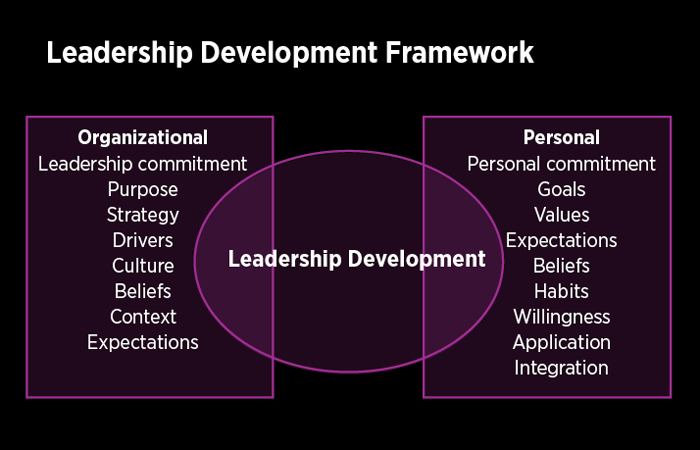CTDO Magazine Article
Building a Real Leadership Pipeline
Change the way leaders are identified and developed at all levels of your organization.
Thu Sep 15 2016

There is a whole list of words and phrases that people in our profession (and to be fair, in most all professions) have coined or co-opted that had meaning and made sense in the beginning, but have become overused to the point that their meaning is lost; others deride them as buzzwords. For our purposes right now, the phrase in that category is succession planning. Of course we need to do it; of course it is mission critical; of course all CEOs will say they have one or mention that it is part of their strategic plan for this year.
Yet the words too often ring hollow with the plan that is out-of-date, too superficial, or focused on only a few jobs at the very top of the organization. As professionals who care about the development of talent, and the best use of the valuable human resources in our organizations, we need to think past the buzzword to the real need of our organization. We need to build a deep, broad, and sustainable pipeline of leadership talent to help our organizations succeed today and prosper long after we are gone.
The mindset matters
Dictionary.com defines mindset as "a fixed mental attitude or disposition that predetermines a person's responses to and interpretations of situations." If we want to change people's responses, we must change their thinking (or mindset) first. Let me be to the point: If you are having trouble getting attention on the importance of developing leaders and gaps, and leaks in your leadership pipeline, start by looking at the mindset of the senior leadership team.
If you see a problem there, take a look at their perspective. One way or another, they have risen to a high position in the organization. They personally figured out how to navigate and learn what they needed to succeed. And so from their perspective, perhaps they simply feel that others can do the same. Specifically, those who can run the gauntlet and figure it out will earn the positions in the future.
You may see something quite different, including that some of those leaders with that mindset might not even possess the skills required, even if they have acquired the position. Regardless of your perspective, it is their mindset that must shift if you want to have any success in creating a strong and stable pipeline of talent for leadership roles in your organization.
Let me propose a mindset or perspective that supports the development of leaders both now and into the future. For each point in this perspective, I share an important outcome for your leadership development activities. Consider it and then think about how your organization would respond and invest differently if this were the mindset you shared.
Leadership isn't a role or position, but rather a set of actions and behaviors. Some with a position don't or won't exhibit them and so they aren't leading. Others without the position or title (and perhaps wouldn't even want or take it if offered) do exhibit the actions and, therefore, they are leading. If leadership is defined by people choosing to follow, we immediately expand the scope, depth, and opportunities in your leadership pipeline.
Leadership is complex. It can't be learned in a workshop or retreat or from reading a book (even if we have a really good conversation about the book after we read it). Because leadership is a complex behavior, we learn it through practice, repetition, failure, and success. If this is true, we must expand the way we develop and nurture these skills within our leaders and future leaders.
Everyone can lead. In Learning Leadership, the latest book from preeminent leadership researchers and experts Jim Kouzes and Barry Posner, they share from their research that "In more than 30 years of collecting data using LPI \[their 360 leadership assessment tool\], practically no one who completed the instrument has scored a zero across all five leadership practices—that is, to be precise, less than .00044 percent gave themselves a response score of ‘almost never' engaging in all 30 leadership behaviors on the instrument." The percentage is even lower for those assessing others on their leadership skills.
Just because people can, doesn't mean they will. After all, leadership behaviors are complex, but until we recognize that people can lead, we won't help them, encourage them, and provide them the chances to try. If your organization believed that more people could lead, how would that change behaviors and investments?
There is no perfect way to lead. Or, stated another way, there is always more than one way to do it well. Yes, there are universal principles that, when applied, will improve the odds of getting a great leadership outcome. But in any situation, there are nuances and differences in exactly how people will apply those principles and get great outcomes. If your organization focused on practical application of universal leadership principles, rather than trying to create replicable replacements, how would the outcome change?
How we got to where we are
For a long time, people have recognized the need to develop leaders for their organizations and, as organizations got larger and more complex, this need grew. For the past 30 years (the time I have been involved in this pursuit), much about this work hasn't changed. The issues and needs remain largely the same, though the drivers may shift a bit, and there continues to be a deep desire for real change and growth in leaders. Yet we keep trying and doing the same things and still expecting different results. Based on the popular definition of insanity, it is no wonder we feel a bit crazy some days.
However, in the past 30 years much has changed, even if we haven't reflected it all consistently in our practices and plans: Technology has changed (and changed again and again), what we know about what works continues to grow, and there is an ongoing proliferation of information, advice, and tactics, much of it free.
All of this leads to where we are today:
Lots of consultants, gurus, and experts offering "stuff" (we call it all "solutions").
Little of what is offered is in context for your organization.
Seldom is it based on your strategic needs.
Too little of it is based on how learning happens.
In the beginning, there was learning—and it was good. As adult humans, we know how we learn: We learn when there is a problem to solve, the best learning comes in context, we learn when it is meaningful for us, and learning comes over time—as a process, not simply as part of an event.
Unfortunately, as the need to train leaders grew, we moved away from what we know works to what we knew we could replicate and coordinate. So we ended up with a school model of classes, where one size fits all, where we largely divorced the event from work, and made it event based rather than process driven.
How to get started
Just because that is where we are, doesn't mean we have to stay there.
As a talent development professional and leader, you have as your charter the objective to, well, develop the talent in your organization to meet the current and future needs of the organization. Without question, leadership talent must be at the top of that list.
To do this important work, build a model that works within your organization. The space here won't allow for a complete discussion of how to do it, but it must be borne from within your organizational context (whether you get external help or not).
And this model must take more into consideration than just leadership development itself; it must be connected to both organizational and personal development. Consider the framework in the figure below.

This framework implies that you build and define the left column of items for your organization and you use the right column to help define who is interested and willing to invest in being a part of your pipeline of leaders. It also places leadership development in the proper context, overlapping both organization and personal needs and goals. Until we place leadership development in this context, it always will be disjointed, seen as a stop-gap measure or something we "really should" do.
With this framework in place, we can begin to think about our pipeline holistically, both in terms of what the organization needs (and not just in senior executives) and who we have willing, if not yet ready, to be a part of a thriving pipeline for future success.
Your call to action
It is hard to undersell the value of nurturing leaders to move an organization forward toward its mission. And I'm betting you are like me, that thinking about these possibilities and being a part of helping leaders grow is about as rewarding as it can get. Creating a pipeline of leaders for your organization starts at the top, in creating commitment and resources to drive action. But it also starts at the bottom, by identifying and encouraging individuals with the capacity and potential to lead and make a difference in your organization.
If you seek out help from consultants or advisers, make sure you pick your partners carefully. Look for those more interested in learning about your business than your budget, and those who truly want your organization to succeed, not just provide you with their solution. Remember, your context matters a lot.
It is your responsibility and opportunity to work from both the top and the bottom and to get the help you need to be most successful. When you roll up your sleeves and go to work doing both, consciously planting the mindset you want to nurture, you will begin making your work easier and more personally rewarding. You also will be creating a true pipeline of leaders.
Read more from CTDO magazine: Essential talent development content for C-suite leaders.
